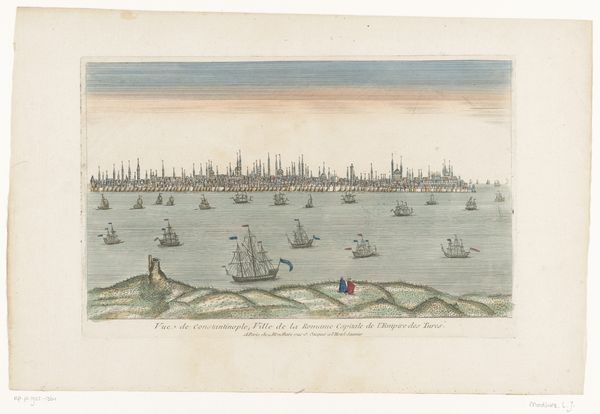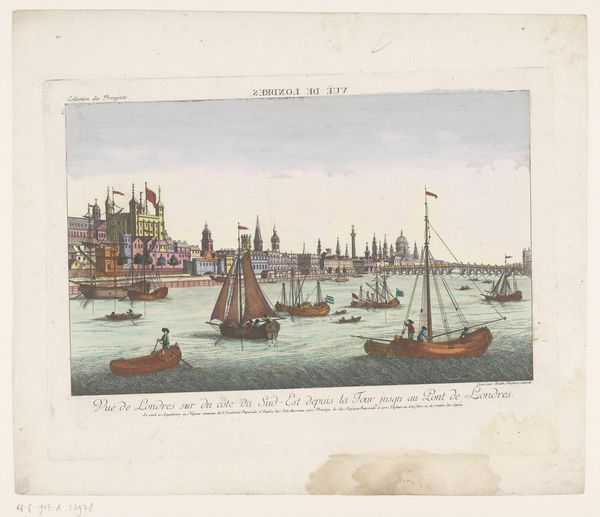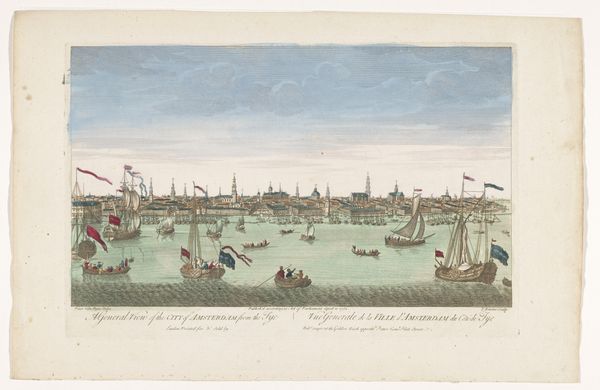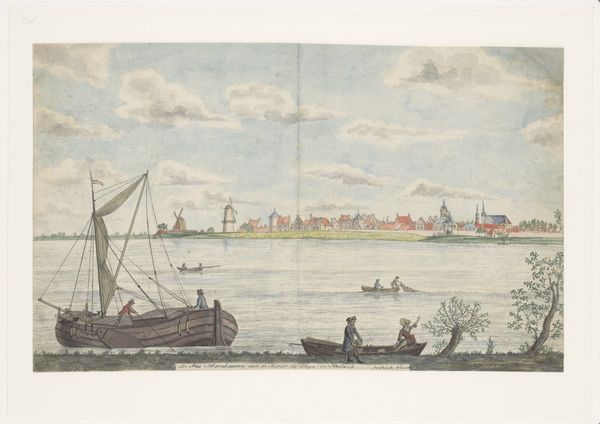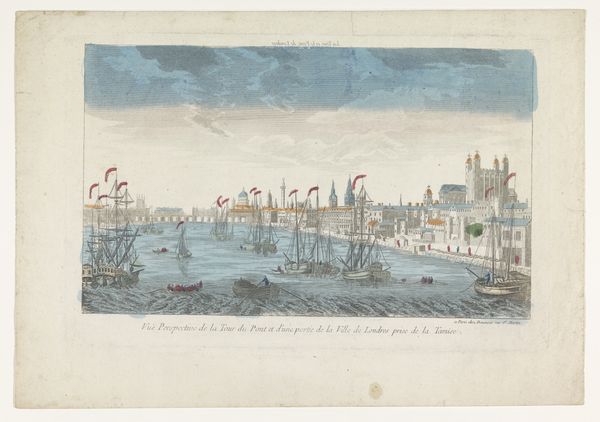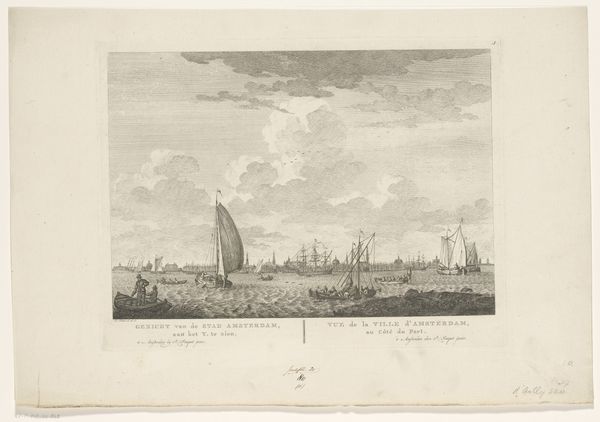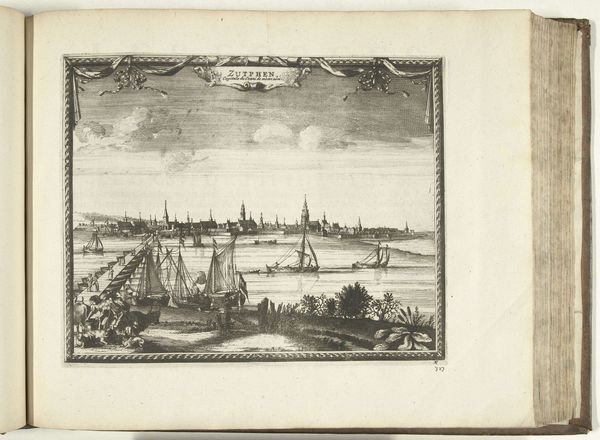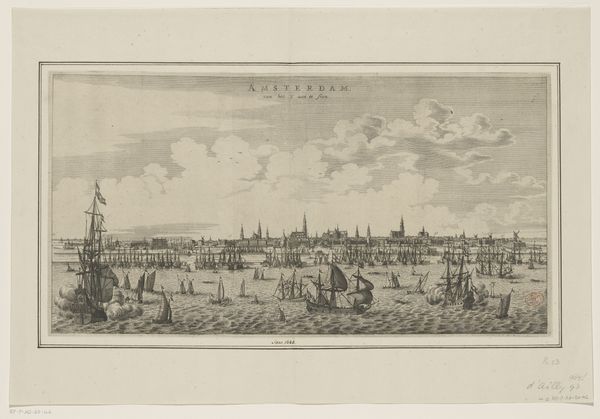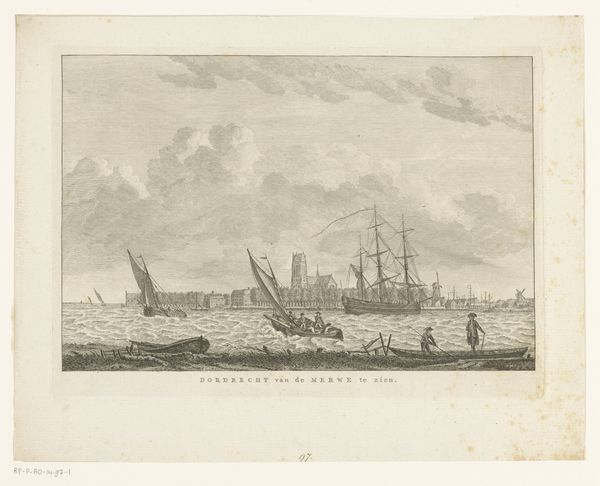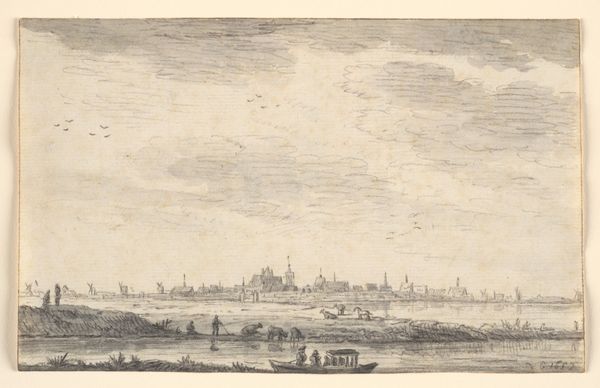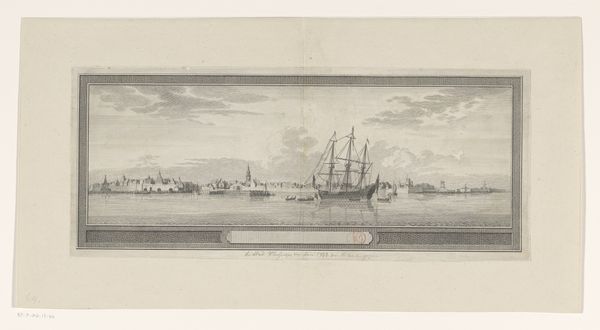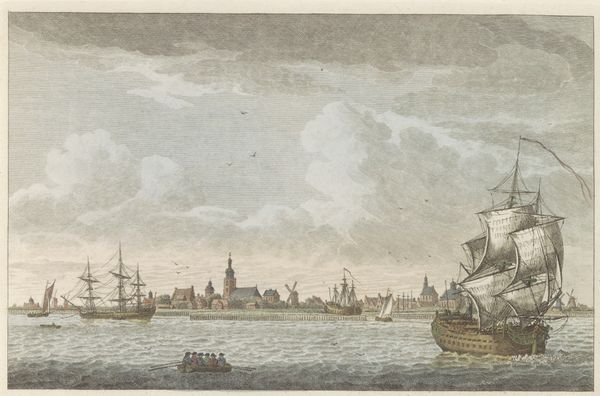
Dimensions: height 241 mm, width 380 mm
Copyright: Rijks Museum: Open Domain
Editor: Here we have "View of the City of Mainz on the Rhine River," a print with watercolor from around 1759 to 1796, by Louis-Joseph Mondhare. The colors are so delicate and precise; it reminds me of looking at an old map. What captures your attention in this piece? Curator: The meticulousness of the printing process, coupled with the delicate application of watercolor, speaks volumes about the means of production available at the time. Note how the labor is divided - the initial design and engraving, versus the hand-coloring that added a layer of value and uniqueness. Think about the socio-economic factors driving that division. Editor: That’s a perspective I hadn't considered. It makes me think about who would have been consuming these images and why. Were they popular amongst a certain class? Curator: Precisely! This wasn't simply art for art's sake. Cityscapes like this one were commodities. The materials -- the paper, ink, pigments -- and the labor invested were all part of a burgeoning commercial market catering to a specific clientele. Editor: So, you’re suggesting we view this less as a pure artistic expression and more as a manufactured object with social implications? Curator: Absolutely. Look at the repetitive nature inherent in printmaking, contrasted with the uniqueness offered through watercolor application. These tensions reveal anxieties about mass production. Were consumers seeking identical cityscapes, or yearning for individual artistic expressions, however subtle? Editor: This changes everything. I now see beyond the image and into the production line of 18th-century art. Thanks for opening my eyes to that! Curator: And thank you for considering this image’s complex origins with a fresh gaze! I'm curious to explore Mondhare's place in the economic ecosystem.
Comments
No comments
Be the first to comment and join the conversation on the ultimate creative platform.
